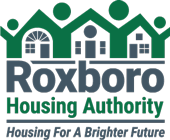Public Housing
Public housing was established to provide decent and safe rental housing for eligible low-income families, the elderly, and persons with disabilities. Public housing comes in all sizes and types, from scattered single-family houses to highrise apartments for elderly families. There are approximately 1.2 million households living in public housing units, managed by some 3,300 HAs. The U.S. Department of Housing and Urban Development (HUD) administers Federal aid to local housing agencies (HAs) that manage the housing for low-income residents at rents they can afford. HUD furnishes technical and professional assistance in planning, developing and managing these developments.
WHO IS ELIGIBLE?
Public housing is limited to low-income families and individuals. An HA determines your eligibility based on:
- annual gross income
- whether you qualify as elderly, a person with a disability, or as a family
- U.S. citizenship or eligible immigration status
If you are eligible, the HA will check your references to make sure you and your family will be good tenants. HAs will deny admission to any applicant whose habits and practices may be expected to have a detrimental effect on other tenants or on the project's environment.
HAs use income limits developed by HUD. HUD sets the lower income limits at 80% and very low income limits at 50% of the median income for the county or metropolitan area in which you choose to live. Income limits vary from area to area so you may be eligible at one HA but not at another. The HA serving your community can provide you with the income levels for your area and family size, or you can also find the income limits here on the Internet.


